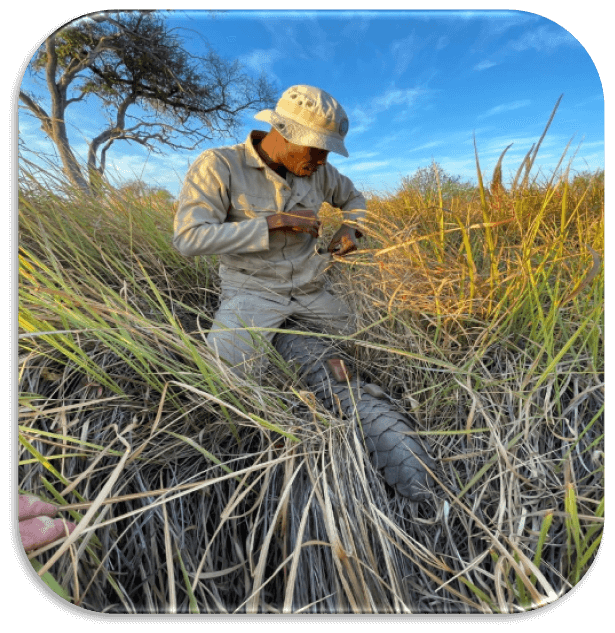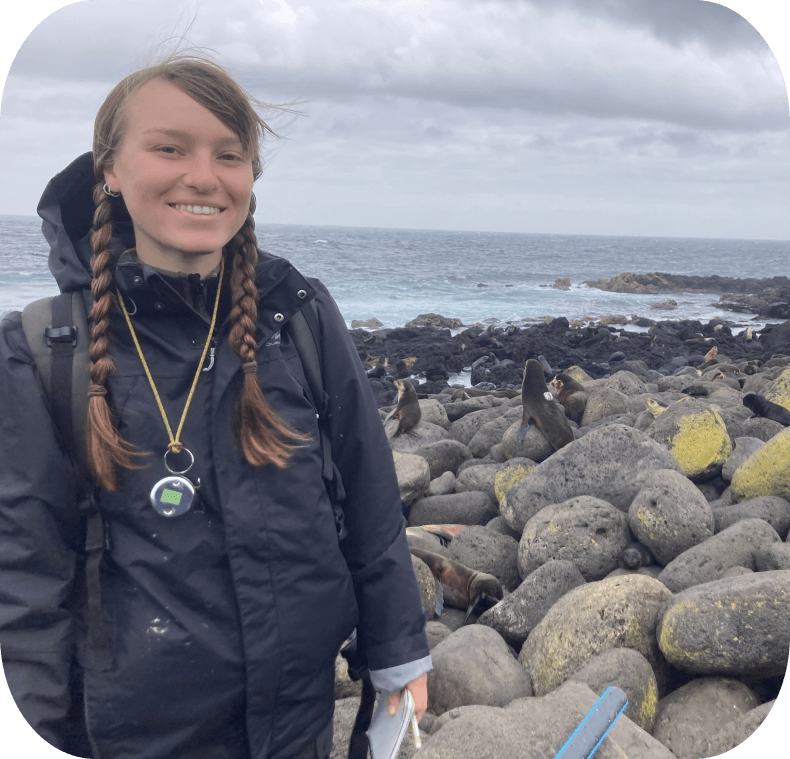News & Views
Welcome to Issue No. 3 of the International Bio-Logging Society Newsletter and Happy New Year! We hope you had a wonderful and relaxing holiday season, recharging for the exciting opportunities ahead!
Our society is excited to announce improved communication with our community. Dahlia will be updating our website, including our News webpage. Welcome Dahlia!

We will soon be launching an anonymous Equity, Diversity, and Inclusion questionnaire aimed at the Members of our Society. By learning more about your perspectives, professional interests, and how our activities resonate with you, we aim to enhance the representativeness of our Society with respect to the community of Bio-loggers and beyond, fostering Equity, Diversity, Inclusion, and Accessibility. Your insights will help us expand our reach, improve our communication, and ensure our initiatives align with what matters most to you. Together, we can shape a society that truly reflects and serves its members.
In this Issue:
- Updates from our Working Groups
- Bio-Logging Bulletin from our Correspondents
- Tales from the Wild: Bio-Loggers in Action
- Events & Opportunities
- Publications
- Job Opportunities
Updates from our Working Groups
A Vision for the Future of Big Data in Bio-Logging Through Data Standards and Preservation
By Sarah Davidson, Francesca Cagnacci, and Christian Rutz
Congratulations to the International Bio-Logging Society’s Data Standardisation Working Group and 26 of its members for their recent Perspective article in Nature Ecology and Evolution. The paper highlights existing prototypes for data standards — many developed by members of this working group. Despite these efforts, most bio-logging data remain hidden and are on track to be lost to the next generation, presenting an obstacle to novel research and effective conservation. The article describes how data standards can pave the way for building integrated, transformative data collections, if complemented with broad participation in standardized data platforms, increased public archiving, and strategies to ensure long-term access to sensitive data.
Finally, the article makes detailed recommendations for museums, government data centers, and those who fund, permit, and publish bio-logging research. It proposes the financing and launch of a community-led coordinating body to govern data standards, with the International Bio-Logging Society as a possible venue.
This article is the result of the working group’s past outreach and meetings, including a workshop at the 2017 Bio-Logging Science Symposium. Watch out for a dedicated page for the working group to become available soon on the Society website. The group is looking for members interested in joining a new advisory committee! For questions or to get involved, contact ibls.datastandards@gmail.com.
Bio-Logging Bulletin from our Correspondents
“Culture and Conservation: Fishing for Change”
By Luciana Cerqueira Ferreira and Leena Riekkola
The 25th Biennial Conference on the Biology of Marine Mammals took place from 11–15 November 2024 in Perth, Western Australia—the first time the Society for Marine Mammalogy has held this conference in Australia! This year’s theme highlighted one of the most significant threats to marine mammals worldwide: their interactions with fishing gear. With an impressive lineup of plenary speakers (including Indigenous scientists) sharing their unique insights, and two pre-conference workshop days offering in-depth exploration of diverse topics, this gathering was a prime opportunity for collaboration, learning, and impactful conservation action.
From over 1,000 presentations on a wide range of subjects, about a third focused on the use of biologging devices, including a plenary talk by Dr. Mark Hindell. Presenters showcased their studies where they attached satellite tags, accelerometers, depth sensors, sound recorders, heart rate monitors/electrocardiograms, and cameras on whales, dolphins, seals, dugongs, and manatees to study their movement, habitat use, vital rates, energy expenditure, as well as diving, foraging, and behaviors.
Many also presented large-scale syntheses of tracking datasets to inform conservation and management efforts. The next conference will be in Puerto Rico (2026), and we hope to keep seeing exciting presentations applying bio-logging methods contributing to marine mammal ecology and conservation.
Tales from the Wild: Bio-Loggers in Action
Mokwaledi Mafa

My name is Mokwaledi Mafa, an MPhil student at the University of Botswana, Okavango Research Institute, working on a study titled “The Ecology of Temminck’s Ground Pangolins in Northern Botswana,” focusing on pangolin burrow selection and characteristics and movement behavior. I am currently employed by the Department of Wildlife and National Parks, Botswana. I have always been concerned with pangolins confiscated from the illegal wildlife trade being released into the wild without any guidance on their ecological needs and no post-release monitoring being carried out to ensure (or even monitor) survival in their new environments.
The small size, nocturnal, elusive nature, and fossorial habits of pangolins make them challenging to study. Therefore, bio-logging equipment allowed the gathering of information on their movements and behaviors without the need for active follows, despite being expensive initially. Fieldwork involved navigating through the tough terrain of the broader Okavango Delta landscape, locating pangolins, “something that was not easy at all,” and carefully attaching GPS satellite, UHF, and/or VHF tags to pangolins, following international best practices and animal welfare protocols. Challenges included locating all tagged animals when telemetry coverage was suboptimal, probably due to some pangolins occupying burrows deep in the ground, concealed within dense vegetation, or residing in burrows at some distance away from routes accessible by vehicle.
I also experienced a high level of transmitter drop-off due to breaking tags when pangolins were out foraging. Tooth marks on recovered tags suggested that predators, especially hyaenas, were primarily responsible, implying that tag attachments that would not break risked injury or death to the pangolin. Despite these challenges, the bio-logging data offered groundbreaking insights, contributing to a better understanding of the ecology of pangolins, including improvements to the design of transmitters. This experience has deepened my skills in bio-logging data collection and applying findings to inform management decisions.
Lily Houles
Hello, my name is Lily Houles. I am a master’s student in France at Rennes University, and during my gap year, I am completing an internship at Centre d’Etudes Biologiques de Chizé, France, that combines data analysis with fieldwork. I have long been passionate about studying the ecology of marine predators, particularly in the context of rapid climate change. While much of an ecologist’s work is computer-based, I wanted hands-on field experience to gain a complete understanding of data collection.

This led me to Amsterdam Island in the French Southern and Austral Lands, where I deployed bio-logging devices on Subantarctic fur seals (Arctocephalus tropicalis) along with a great team of marine biologists. We deployed these tags, which record location, dive depth, tri-axial accelerometry, and magnetometry, as well as temperature, on females in the colony. We then waited for them to go forage at sea and come back on land to nurse their pup to recover the biologgers. Given the rate at which the marine environment is changing, we want to understand the impact of environmental conditions and diet on foraging behavior, strategy, and efficiency of these animals and how it impacts pup growth and survival. The data we collect here provide valuable information on feeding ecology at sea, critical for understanding the species’ biology and ensuring long-term population monitoring.
This fieldwork is my first experience, and I am very happy to be learning the ropes of being a field biologist working on large carnivores. While the initial moments walking inside the colony amongst these wild animals were intimidating, this experience has made me more confident and precise. The key is to stay attentive to the animals and understand their behavior to minimize disturbance. I feel very privileged to have the chance to observe these wild animals in their natural environment, and I hope the data we collect can make a difference for their conservation.
Events & Opportunities
- WILDLABS Awards, Deadline is February 13, 2025: The WILDLABS Awards are back! This year, there are two grant categories of $50,000 and $10,000 to support up to 15 conservation technology projects.
- Behind the Buzz: From Data to Decisions (series of events, check the webpage for registration links!): Amidst the post-COP16 buzz, are you curious how global policy frameworks connect to your work in animal movement science and conservation? Join WILDLABS to break down the basics of global conservation policy frameworks through the lens of movement ecology and explore how our community can better translate critical data to decision-making.
- 43rd International Sea Turtle Society Symposium, March 22-27, Accra, Ghana.
- Frontiers in Ornithology, April 1-3 2025, Nottingham, UK & Bluesky.
- Wolves Across Borders, June 2-6 2025, Lunteren, the Netherlands.
- 20th Anniversary Conference of the Oceania Chondrichthyan Society, June 16-19 2025, Sunshine Coast, QLD, Australia.
- Movement Ecology of Animals – Gordon Research Conference, July 27 – August 1 2025, Across Scales, Ventura, California, USA: Join us for a conference exploring the fascinating links between movement ecology, ecological frameworks, and conservation, addressing how movements across scales influence biodiversity, ecosystems, and species interactions. Sessions will cover cutting-edge topics, from movement adaptations in the Anthropocene to forecasting for conservation, alongside advancements in modeling, tools, and data sharing. Submit your Abstract and Register soon! Availability is tight, and if you are an Early Stage Researcher, you can participate in the selection for Flash talks and Poster Awards!
Publications
Since our last newsletter, there have been 15 bio-logging papers published (based on a Web of Science search using the keywords “bio-telemetry” OR “biologging” OR “bio-logging” OR “biotelemetry” OR “animal-borne”). These papers range from understanding the ecology of species to the impacts of tagging. Here are some examples of the work going on in our community:
- Behavioural responses of a trans-hemispheric migrant to climate oscillation (Proc. R. Soc. B)
- Plugging biologging into animal welfare: An opportunity for advancing wild animal welfare science (Methods in Ecology and Evolution)
- High-resolution biologging of an Atlantic bluefin tuna captured and eaten by a supposed orca (Scientific Reports)
- Using accelerometry tags to quantify gray whale foraging behavior (Marine Mammal Science)
Job Opportunities
Are you hiring or have a job to share? Write to us, and we will post your job!
- 3-year Postdoc / Research Coordinator position, Urban Exploration Project, University of St Andrews, UK: Are you interested in movement ecology, animal tracking, conservation science, environmental planning, and finding pathways towards sustainable human–wildlife coexistence? An exciting opportunity will soon be advertised for joining the team coordinating the Urban Exploration Project – a collaborative initiative developed in close partnership with the National Geographic Society. The job advert will be posted on the University’s vacancies site (www.vacancies.st-andrews.ac.uk), and any informal enquiries can be sent (with CV) to Professor Christian Rutz (christian.rutz@st-andrews.ac.uk). Please share widely.
- The Farine Lab at The Australian National University is seeking a PhD candidate to work on the movement ecology of keystone Australian pollinators: large honeyeaters.
- NERC Climate System and Biodiversity Science PhD opportunity hosted at the UK Centre for Ecology and Hydrology, Wallingford, UK, on “Does wilder grazing enhance ecosystem processes?”
- NERC Climate System and Biodiversity Science PhD opportunity hosted at Institute of Zoology, UK, on, “Using biologging to prioritise conservation actions for an endangered African carnivore”
- PhD opportunity hosted at Liverpool University, UK, on “Investigating the cognitive ecology of the European nightjar”
Useful Websites:
- AcademicsJobsOnline
- Euraxess
- Pacific Seabird Group Job Board (with links to other resources)
Stay Tuned for the Next Newsletter of the IBioLS in 3 Months!
We are thrilled to have you as part of our community. If you have any inquiries or want to be part of the next Newsletter, please do not hesitate to contact intl.biologging.society@gmail.com.
Don’t get lost, (bio)-log yourself in this diverse community!
READ MORE ON OUR WEBSITE
Email: intl.biologging.society@gmail.com
Copyright © 2024 International Bio-Logging Society
